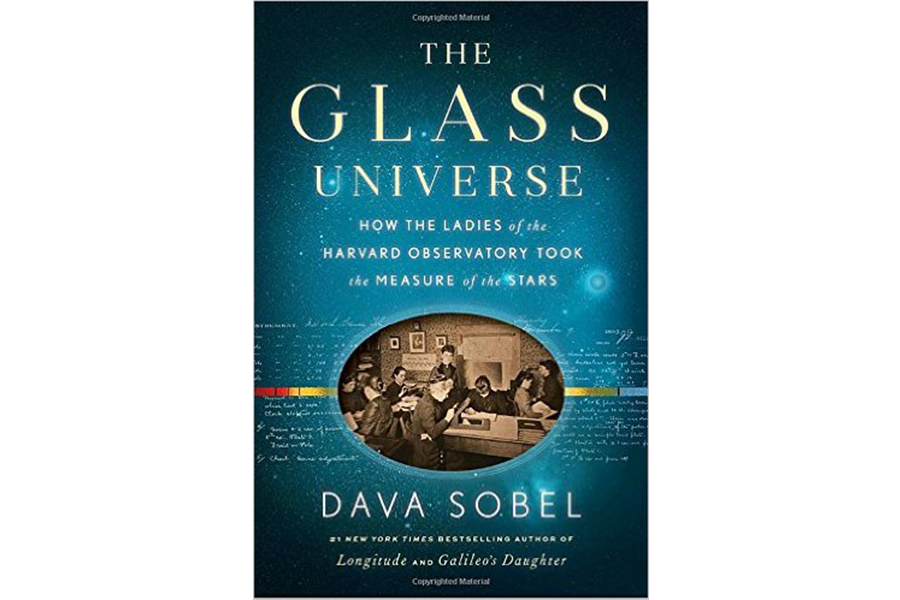'The Glass Universe' recalls the women who helped to chart the heavens
Loading...
The “glass universe” in the title of Dava Sobel's fantastic new book The Glass Universe: How the Ladies of the Harvard Observatory Took the Measure of the Stars refers to the hundreds of thousands of glass photographic plates made by astronomers at the Harvard College Observatory of the stars at night, plates made night after night, stacks and stacks of glass plates, each containing a minuscule glimpse of the heavens at one particular instant. Starting the mid-19th century, the observatory began amassing these plates in what would grow to become one of the most sprawling and painstaking observational histories ever recorded.
But the title is also a sly glance at the stereotypical but all too real “glass ceiling” that woman have faced in occupations traditionally dominated by men, and as Sobel describes it, the men at the Harvard Observatory during the time of her latest story had plenty of work on their hands: “They charted the heavens, monitored the orbits of planets and moons, tracked and communicated the courses of comets, and also provided time signals via telegraph to the city of Boston, six railroads, and numerous private enterprises such as the Waltham Watch Company,” she writes, adding perhaps unnecessarily, “The work demanded both scrupulous attention to detail and a large capacity for tedium.”
Those endlessly growing stacks of glass plates increased the workload exponentially and prompted the director of the observatory, Edward Pickering, to hire “computers” – assistant whose job was to catalogue and interpret the images on those plates. Since women were paid a fraction of what male assistants would have required, Pickering filled his staff of “calculators” with women, including his maid, Williamina Fleming. Joining her were Vassar graduate Antonia Maury, Wellesley graduate Annie Jump Cannon, and Radcliffe graduate Henrietta Swan Leavitt, along with a dozen others in what would, years later, be referred to scornfully as “Pickering's Harem.”
Readers who delighted earlier Sobel books like "Galileo's Daughter" or "Longitude" will be able to guess what unfolds from such premises. This is an author who has created a reliable name for herself finding hidden or overlooked stories in the history of science and finding the human beings in those stories, and "The Glass Universe" is her most winning book yet, a perfect fit of great tale and great teller.
The women in "The Glass Universe" have never had their stories told this way before. We meet the heiresses who did so much to finance the pioneering work done by the others: Catherine Wolfe Bruce, who paid for large photographic telescopes for Harvard observation stations and endowed a gold medal for the Astronomical Society of the Pacific, and Anna Palmer Draper, the widow of a giant in the field of stellar photography, who likewise bought telescopes and who formed a prickly but productive relationship with Pickering and opened her bank account to finance his observatory.
Pickering himself fascinates throughout. He became director of the observatory in 1877, but even back in 1870 he was a singular character, the inventor of a device for transmitting sound via electricity – a direct precursor to Alexander Graham Bell's device patented six years later. (“Pickering, however,” Sobel mentions, “never thought to patent any of his inventions because he believed scientists should share ideas freely”). In "The Glass Universe," he comes across as far more complex than a simple job-filler looking to save money by hiring women to do rote work; rather, he quickly came to trust his “computers” with far more in-depth work.
It was, as Sobel's book makes abundantly clear, a trust that was magnificently repaid. Henrietta Swan Leavitt's observations of Cepheid variable stars helped to establish fundamental methods of measuring the size of the Milky Way galaxy; Annie Jump Cannon created a stellar classification system that's still in use today; Antonia Maury's scrutiny of the glass plates grew into a groundbreaking catalogue of stellar spectra; at every turn, the women in Pickering's employ laid many of the foundations of modern stellar photometry, all the while earning both the reflexive condescension of their male counterparts and a fraction of the pay of those colleagues.
Sobel fills in these astronomical accomplishments with confidently-rendered swaths of personal details, not just of the observatory's women but of all the characters that walk through her story, from Harvard President Charles Eliot to celebrated Boston Brahmin astronomer Percival Lowell (whose fanciful speculations of an inhabited Mars were enthusiastically embraced by Pickering). She resists the temptation to retroactively psychoanalyze these figures, preferring instead to stick to their letters and journals as she slowly charts both their own stories and the story of the observatory as it grew in international renown. The gradual nature of scientific advancement – and the sheer serendipity of some key astronomical discoveries – comes through as strongly here as it did in Sobel's breakthrough "Longitude."
According to Sobel, the visual data amassed in those stacks and stacks of photographic plates, the glass universe first measured by the ladies of Edward Pickering's “human computer” company, is currently being digitized into a searchable electronic database. So the work of these remarkable women may have still more mysteries to divulge.






